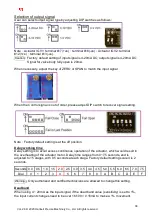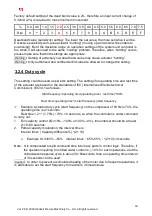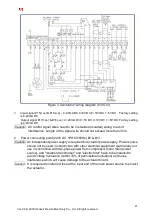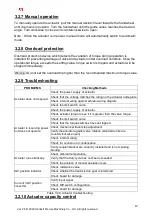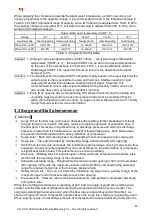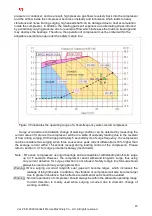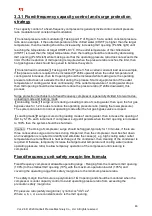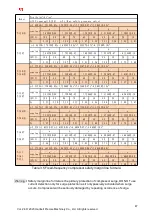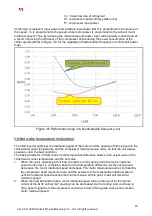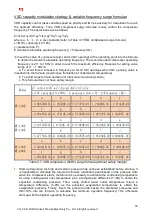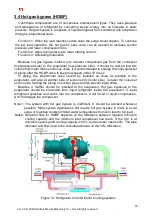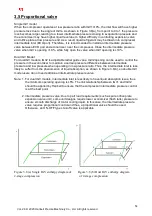
43
Vol. 2.6 © 2020 Hanbell Precise Machinery Co., Ltd. All rights reserved
3.2.7 Manual operation
To manually operate the actuator, pull the manual declutch lever towards the handwheel
until it remains in position. Turn the handwheel until the guide vanes reaches the desired
angle. Turn clockwise to close and counterclockwise to open.
Note
:
When the actuator is in power, manual mode will automatically switch to automatic
mode.
3.2.8 Overload protection
Overload protection device which detects the variation of torque during operation is
installed for preventing damage of valve and actuator under overload condition. Once the
operational torque exceeds the setting value, torque switch is tripped and actuator will be
stopped immediately.
Warning
:
:
:
:
Do not set the overload trip higher than the recommended maximum torque value.
3.2.9 Troubleshooting
PROBLEMS
Checking Methods
Actuator does not respond
Check the power supply of actuator.
Check that the voltage matches the rating on the actuator nameplate.
Check internal wiring against actuator wiring diagram.
Check the limit switch cams.
Actuator is receiving power
but does not operate
Check the power supply of actuator.
Check actuator torque to see if it is greater than the valve torque.
Check the limit switch cams.
Check that the torque switches have not tripped.
Check mechanical travel stop adjustment.
Verify the actuator against valve rotation (standard units are
counterclockwise open).
Check internal wiring.
Check for corrosion or condensation.
Verify coupler/bracket are correctly installed and is not causing
binding.
Actuator runs erratically
Check ambient temperature.
Verify that the duty cycle has not been exceeded.
Check the position of manual operation lever.
IGV position indicator
Check resistance value.
Check whether the transmission gear is interfered.
Check board for damage.
Current / IGV position
converter
Verify input signal.
Check DIP switch configuration.
Check board for damage.
Table 3.2.9 Actuator troubleshooting
3.2.10 Actuator capacity control










